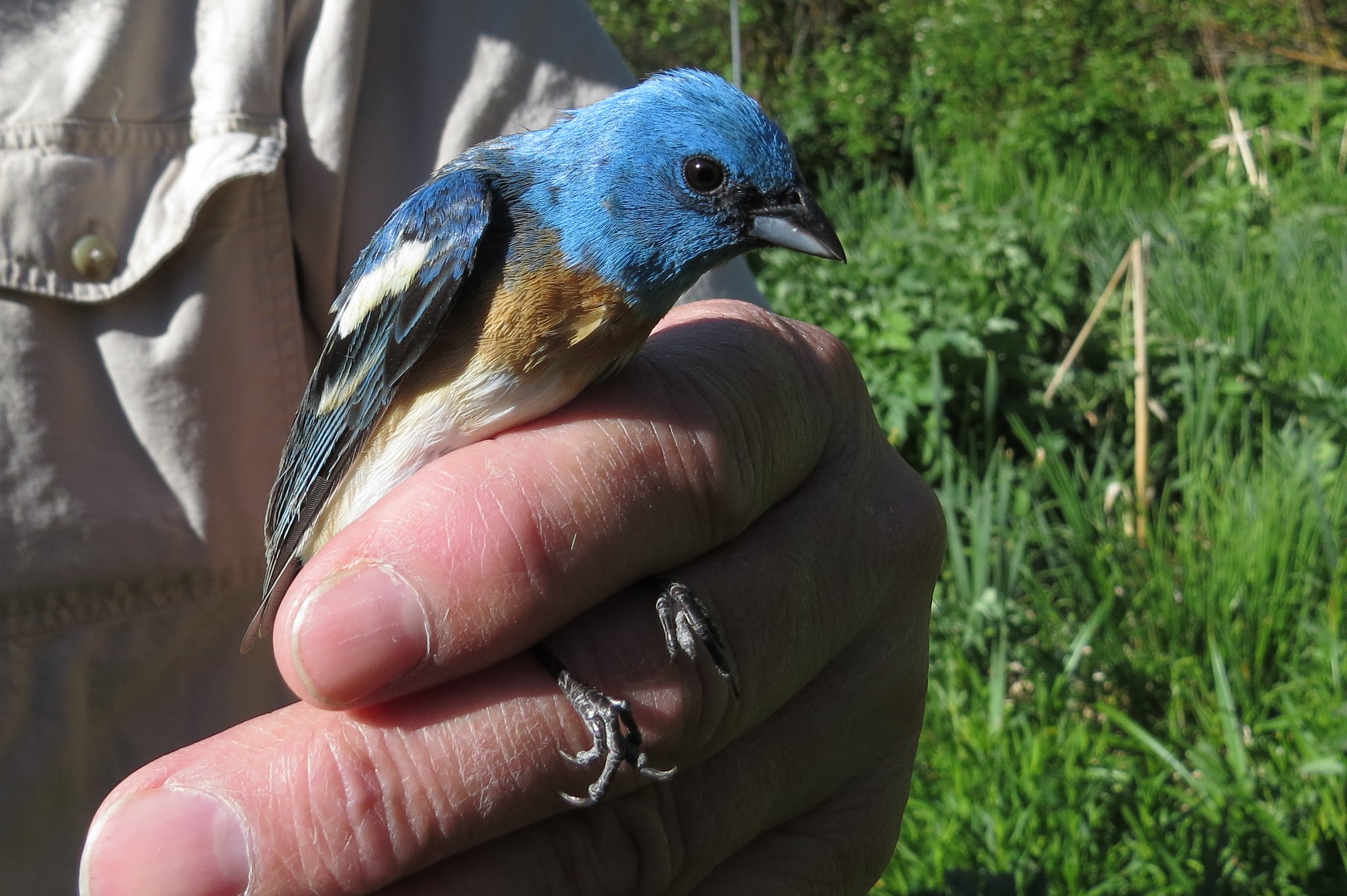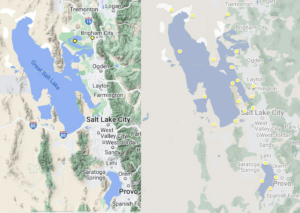What Can Birds with Backpacks Teach Us About Migration?

A look at the Motus Wildlife Tracking system – and what Tracy Aviary is doing to help.

Tracy Aviary Conservation is constantly investing in new technology to improve our program and produce high quality scientific research. One new technology, the Motus Wildlife Tracking System, is revolutionizing how we understand avian migration. Motus is a wildlife tracking technology developed by Birds Canada that uses radio signals to track animals large and small alike – ranging from birds, to bats, to butterflies. Biologists capture an animal, place a lightweight transmitter tag on their leg or back (almost like a backpack!), and then release the animal back into the wild – typically in less than a minute. Then, when the animal flies within a few miles of a tracking station, the station picks up and records the signal from the tag. This data is then submitted to a central database which is available to any researcher.
Motus is rapidly changing how we think about bird migration and other animal movement. Motus allows us to study specific details about how birds migrate that have never been witnessed before, such as exact migration patterns, stop-over locations, and wintering sites. This data will enable us to identify and protect land that is critical for birds’ survival – and respond to changes in migration caused by human activity.
 Motus has been used extensively in the eastern United States, but – as of today – is lacking in the Intermountain West due to a lack of tracking stations. But that is changing. Tracy Aviary has teamed up with the Utah Division of Wildlife Resources (DWR) to install over 20 tracking stations around the Great Salt Lake and Utah Lake areas. In addition, Tracy Aviary will install a station at the Jordan River Nature Center’s new bird blind, along with an educational display displaying a real-time view of data collected by the station. The stations will allow researchers throughout Utah to learn more about the wildlife of Utah.
Motus has been used extensively in the eastern United States, but – as of today – is lacking in the Intermountain West due to a lack of tracking stations. But that is changing. Tracy Aviary has teamed up with the Utah Division of Wildlife Resources (DWR) to install over 20 tracking stations around the Great Salt Lake and Utah Lake areas. In addition, Tracy Aviary will install a station at the Jordan River Nature Center’s new bird blind, along with an educational display displaying a real-time view of data collected by the station. The stations will allow researchers throughout Utah to learn more about the wildlife of Utah.
The Tracy Aviary conservation team hopes to start our own Motus tagging program as our stations go online. We will target several species that biologists have identified as needing additional data to inform management decisions (including an increased understanding of migratory patterns and movement). This includes species that are currently in decline, like the Snowy Plover which breeds at Great Salt Lake. Through our Motus station and tagging programs, the Tracy Aviary Conservation team will help the scientific community map out the wintering locations of the Great Salt Lake’s Snowy Plovers – allowing us to not just protect these birds in Utah, but also while they are away. We are actively looking for volunteers to get involved with station installation, as well as partners to help fund the purchase of tags (which can run upward of $200 per tag!). If you are interested, get in touch with Tracy Aviary.
By: Tully Frain. Conservation Ecologist & Utah Motus Coordinator